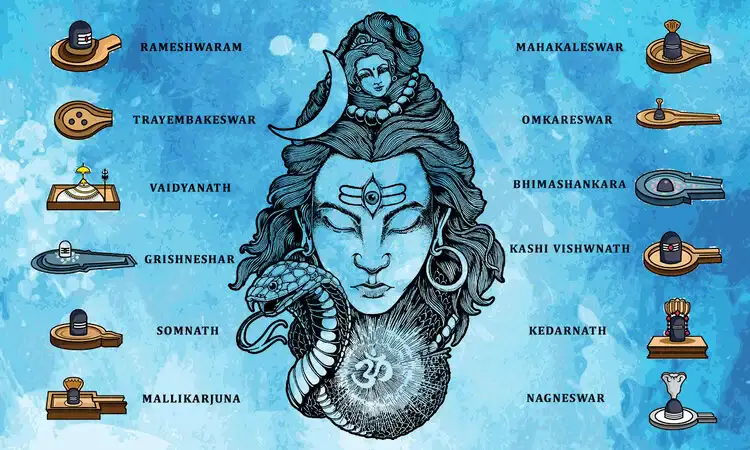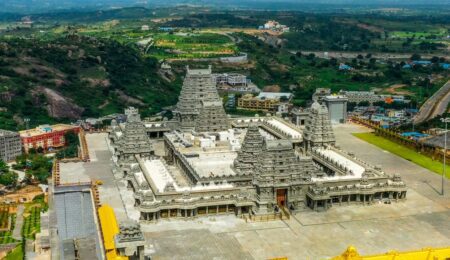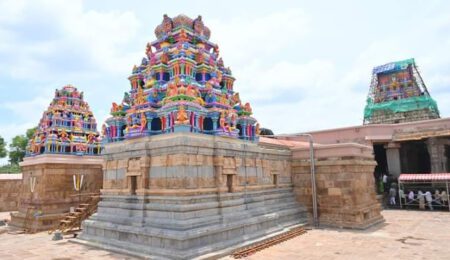The 12 Jyotirlingas of India – Sacred Abodes of Lord Shiva
The 12 Jyotirlingas, revered across India, are the most sacred abodes of Lord Shiva, where He is worshipped in the form of a radiant column of light, symbolizing the infinite nature of Shiva. These temples are not just spiritual destinations but also architectural marvels steeped in mythological significance. Each Jyotirlinga has a unique legend and represents a divine manifestation of Shiva.
1. Somnath Jyotirlinga – Gujarat
- Location: Prabhas Patan, Veraval, Saurashtra region, Gujarat
- Significance: Considered the first among the 12 Jyotirlingas, Somnath symbolizes eternal existence and rebirth. It has been destroyed and rebuilt several times, testifying to its historical and spiritual significance.
2. Mallikarjuna Jyotirlinga – Andhra Pradesh
- Location: Srisailam, Andhra Pradesh
- Significance: Located on the picturesque hills of the Nallamala forest, this temple signifies the unity of Shiva and Parvati. It is one of the few Jyotirlingas situated on a hilltop.
3. Mahakaleshwar Jyotirlinga – Madhya Pradesh
- Location: Ujjain, Madhya Pradesh
- Significance: This is the only Jyotirlinga facing south and is believed to be self-manifested. Mahakaleshwar is revered as the destroyer of all evils and time itself (Kala).
4. Omkareshwar Jyotirlinga – Madhya Pradesh
- Location: Mandhata Island, Narmada River, Madhya Pradesh
- Significance: Resembling the Om (ॐ) symbol, Omkareshwar signifies the divine sound and creation. It is a confluence of faith and natural beauty.
5. Kedarnath Jyotirlinga – Uttarakhand
- Location: Kedarnath, Uttarakhand
- Significance: Nestled in the Himalayas, this temple is accessible only during specific months due to snow. Kedarnath is linked to the Pandavas and is one of the Char Dhams.
6. Bhimashankar Jyotirlinga – Maharashtra
- Location: Sahyadri Hills, Pune, Maharashtra
- Significance: Surrounded by dense forests and wildlife, Bhimashankar is associated with the legend of demon Tripurasura. It is also the origin of the Bhima River.
7. Kashi Vishwanath Jyotirlinga – Uttar Pradesh
- Location: Varanasi (Kashi), Uttar Pradesh
- Significance: A spiritual nucleus for Hindus, Kashi Vishwanath symbolizes liberation (moksha). The temple stands on the western banks of the holy Ganges River.
8. Trimbakeshwar Jyotirlinga – Maharashtra
- Location: Trimbak, Nashik, Maharashtra
- Significance: Located near the origin of the Godavari River, Trimbakeshwar is unique as the lingam here has three faces representing Brahma, Vishnu, and Mahesh.
9. Vaidyanath Jyotirlinga – Jharkhand
- Location: Deoghar, Jharkhand
- Significance: Also known as Baba Baidyanath, this temple is linked to Ravana’s devotion to Shiva. It is believed that worship here fulfills all wishes.
10. Nageshwar Jyotirlinga – Gujarat
- Location: Dwarka, Gujarat
- Significance: Situated near the Arabian Sea, Nageshwar symbolizes protection from poison and fear. It is associated with the demon Daruka.
11. Rameshwaram Jyotirlinga – Tamil Nadu
- Location: Rameswaram, Tamil Nadu
- Significance: Associated with Lord Rama’s journey to Lanka, this temple marks the southernmost Jyotirlinga and is one of the Char Dhams.
12. Grishneshwar Jyotirlinga – Maharashtra
- Location: Ellora, Ch Sambhaji Nagar, Maharashtra
- Significance: Located near the UNESCO World Heritage Site Ellora Caves, Grishneshwar is the last of the 12 Jyotirlingas and symbolizes compassion and devotion.
Spiritual Significance of Jyotirlingas
The term “Jyotirlinga” translates to “pillar of light” and represents Shiva’s infinite nature. Pilgrimage to these shrines is believed to cleanse one’s sins and lead to spiritual awakening and liberation.
Visiting the 12 Jyotirlingas is more than a religious journey—it’s a spiritual odyssey across the diverse landscape of India. From the icy peaks of Kedarnath to the coastal serenity of Rameswaram, each Jyotirlinga connects the devotee to the divine. The 12 Jyotirlingas are more than temples—they are portals to transcendence




Leave a Comment